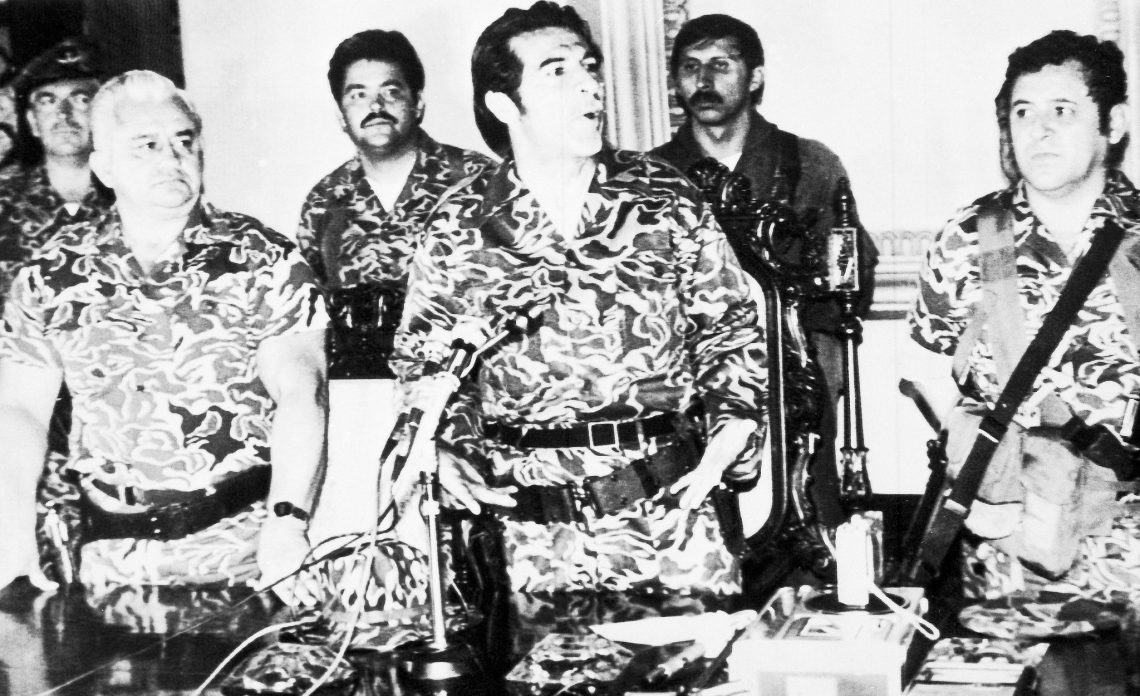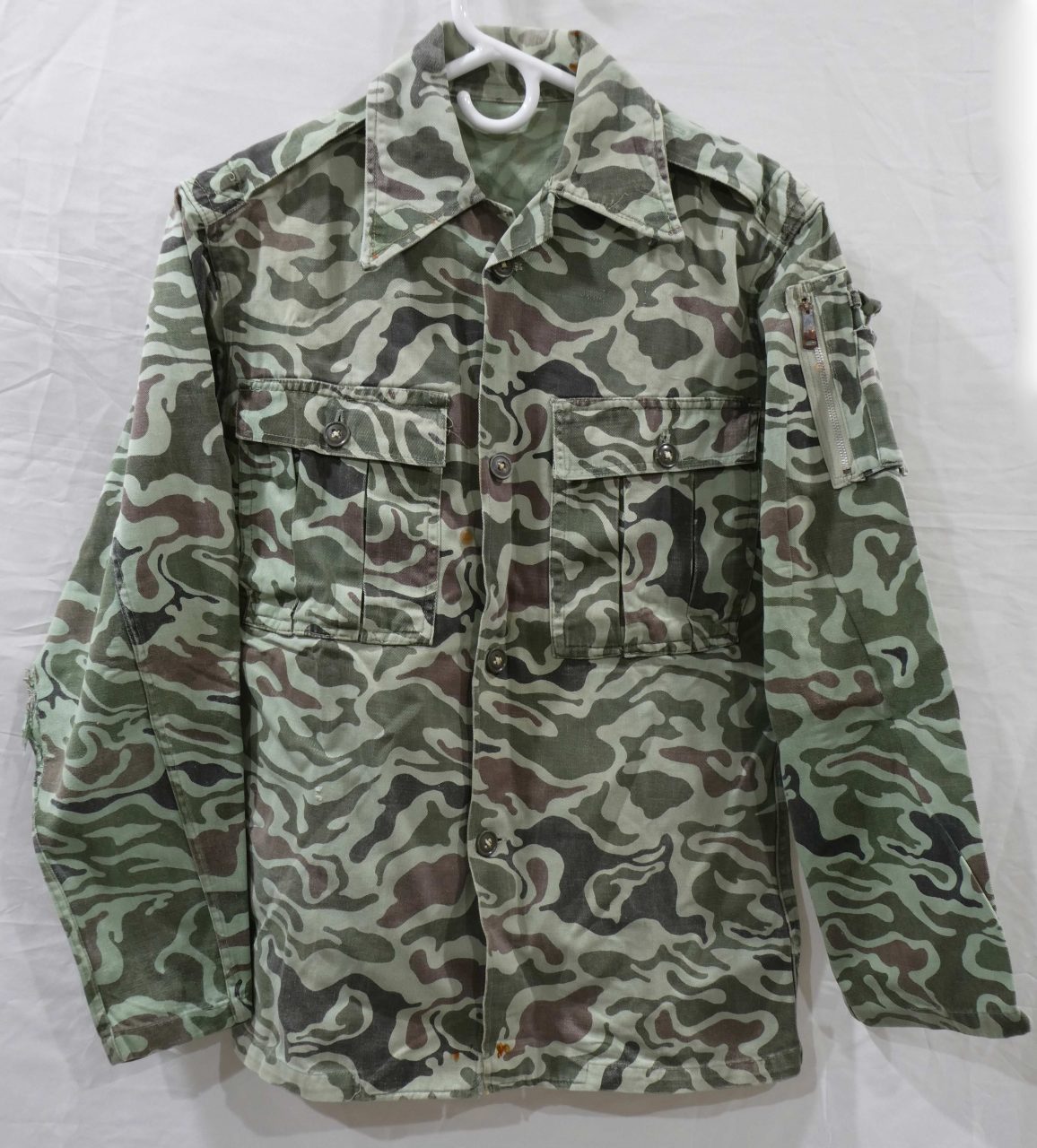South Korean Special Forces used this camouflage pattern in the 1960’s through 1980’s [1][2]. It was also exported to other countries as well [3], most notably Iraq, Ethiopia, El Salvador, Peru, and Guatemala [4].
South Korea openly shipped several planeloads of these and other uniform items to DERG Ethiopia in the summer of 1977 using the American company Flying Tiger Airlines [5][6]. Ethiopia was at war with Somalia at this time, and the Somalians knew about the shipment and US airline so they suspected US arms were being shipped since it was implausible to them that so many flights could have been chartered just for uniforms, an allegation the US embassy denied [6][7][8]. Ethiopians rebels (likely West Somali Liberation Front, WSLF) wearing these South Korean uniforms were captured by Ethiopia in September 1977, causing Ethiopia to ask South Korea if it had diplomatic relations with Somalia [9].
Jacket:
Jacket 1:
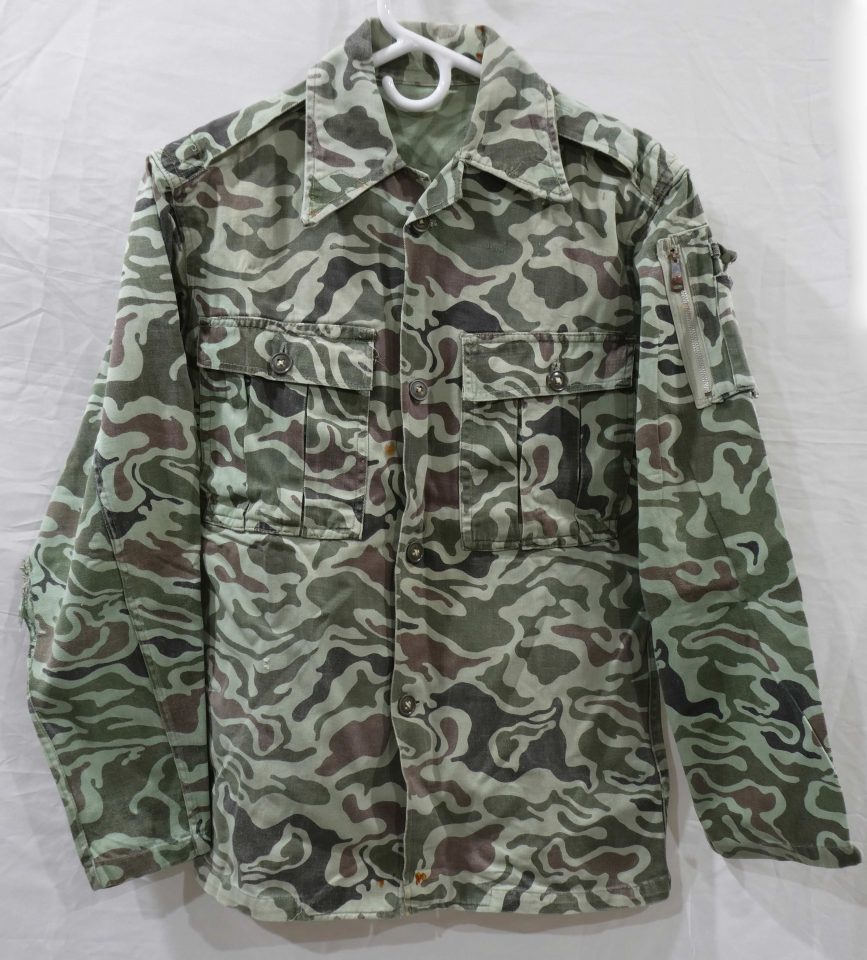
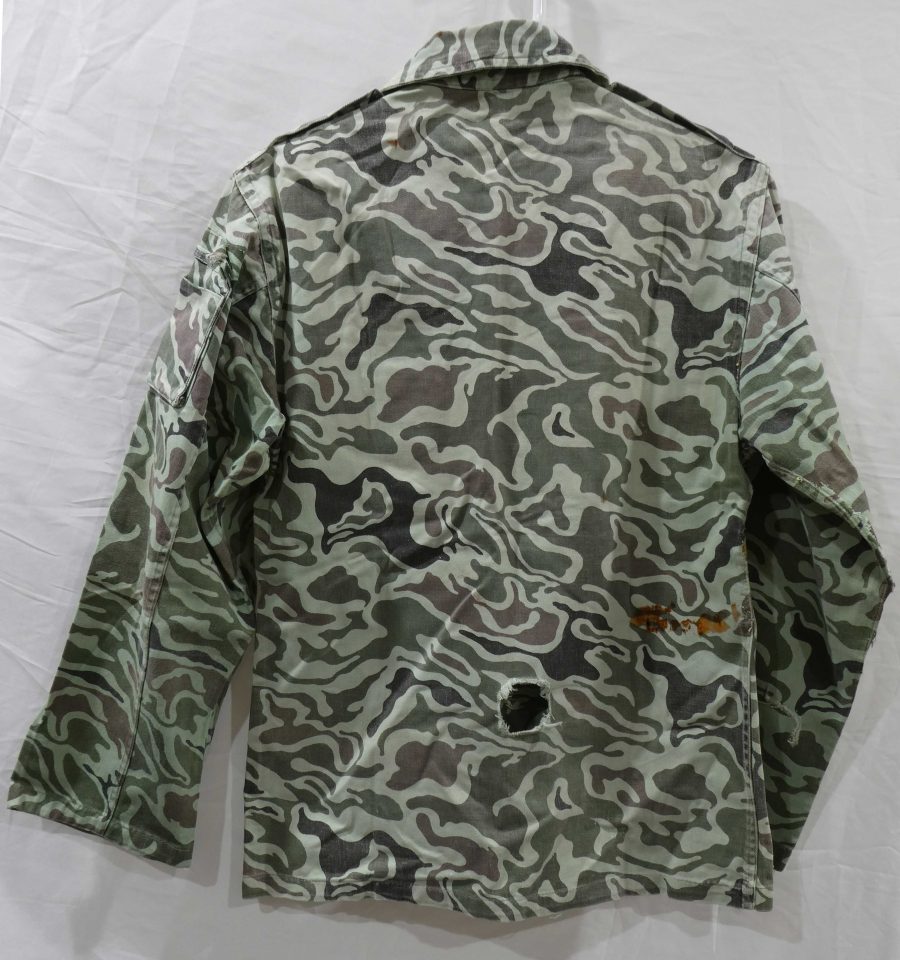
This jacket was exported to Ethiopia for the DERG regime, which provided training for ZIPRA starting in 1977 towards the end of the Bush War [10], before making its way south to Rhodesia where it was used by a ZIPRA insurgent. The item was recovered at the Guineafowl School assembly point in Gwelo (now Gweru, information provided by seller), along with the Strichtarn and Egyptian shirts. Like many insurgent-used items, it shows signs of heavy use. The fabric is relatively lightweight, meaning it would wear very quickly in field conditions.
Collar:

Red collar board remnants at stitch lines. An example with intact collar insignia can be seen here: https://www.newrhodesian.ca/viewtopic.php?p=50832&sid=d2a06be7a13f17c4415b4c9ba1edc348#p50832
Epaulettes:
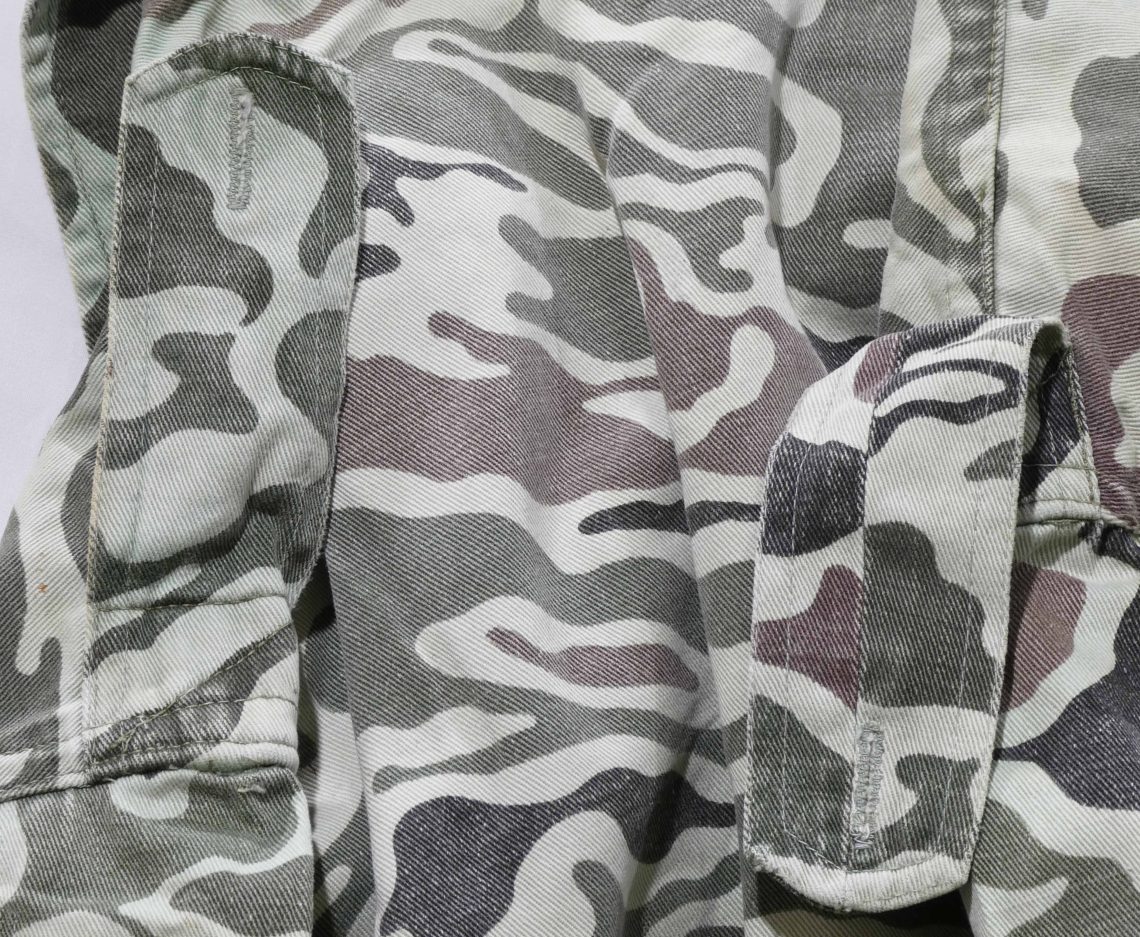
Buttons fell off.
Arm Pocket:
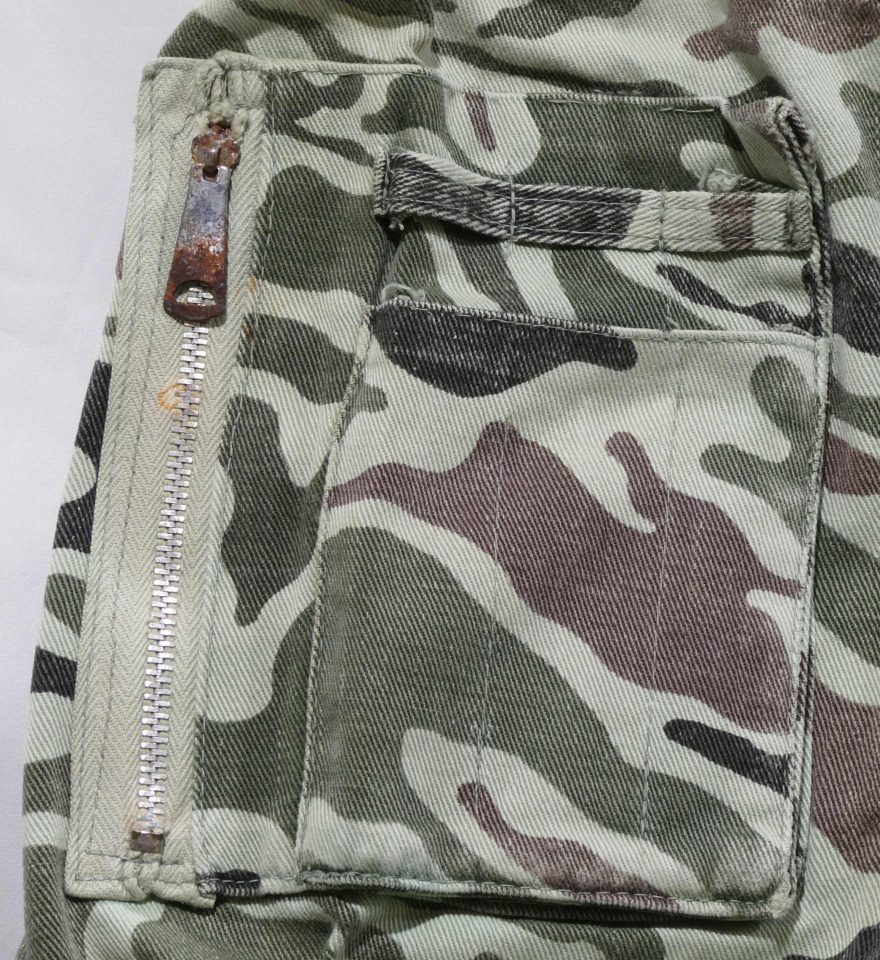
Flight jacket style zipper pocket. Zipper has rusted shut.
Chest Pockets:
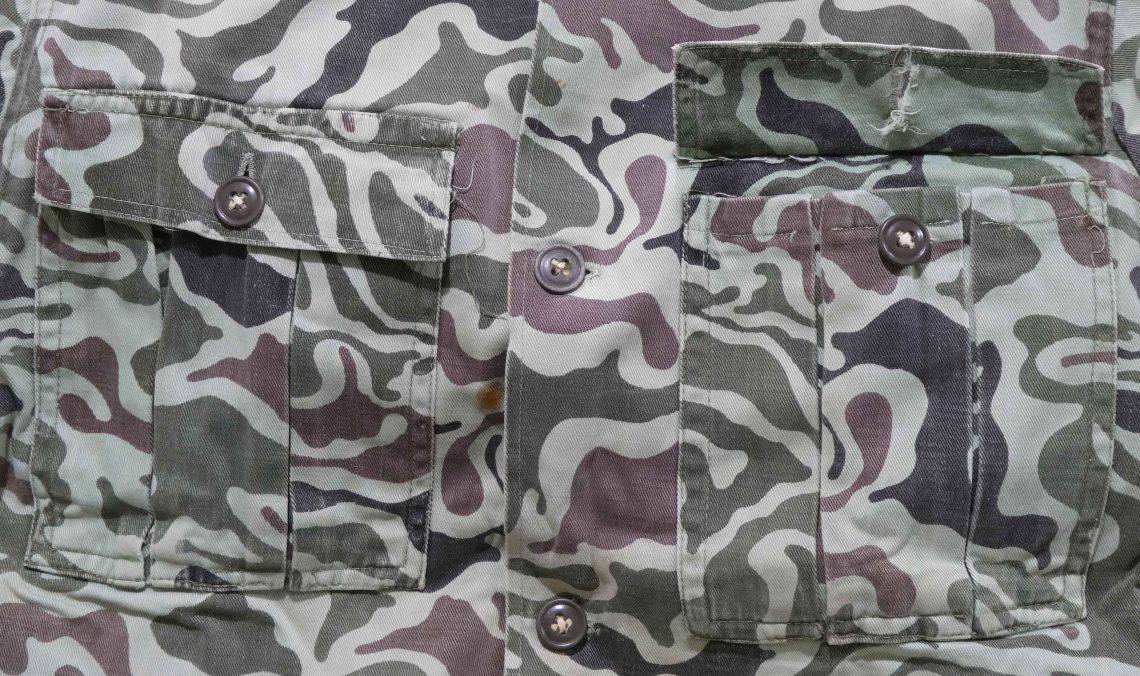
Cuffs:
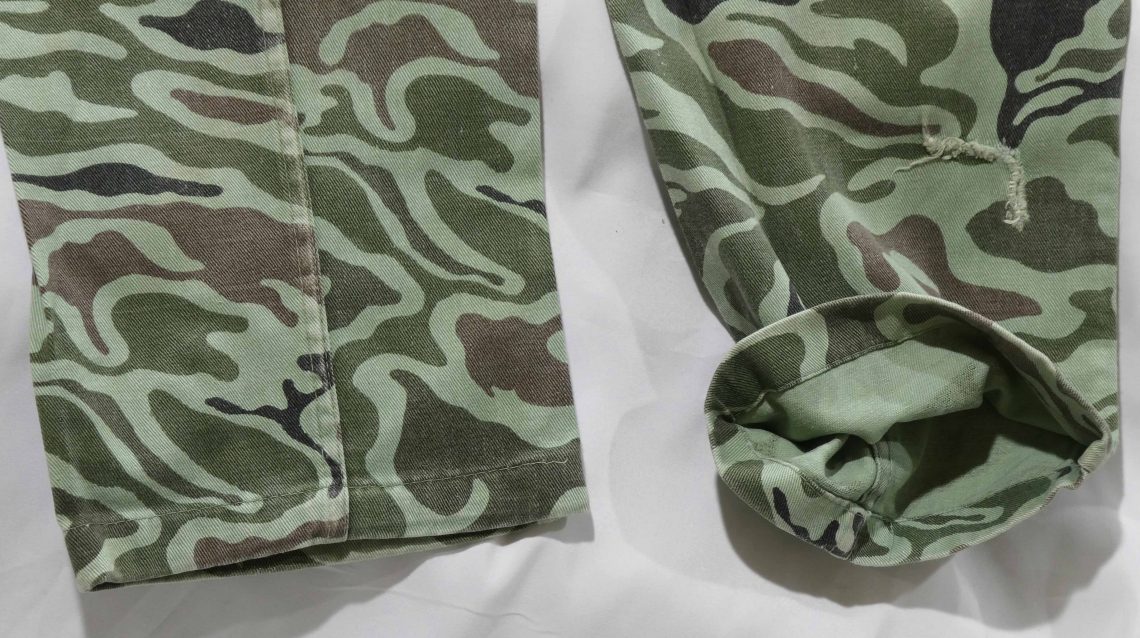
Inside:
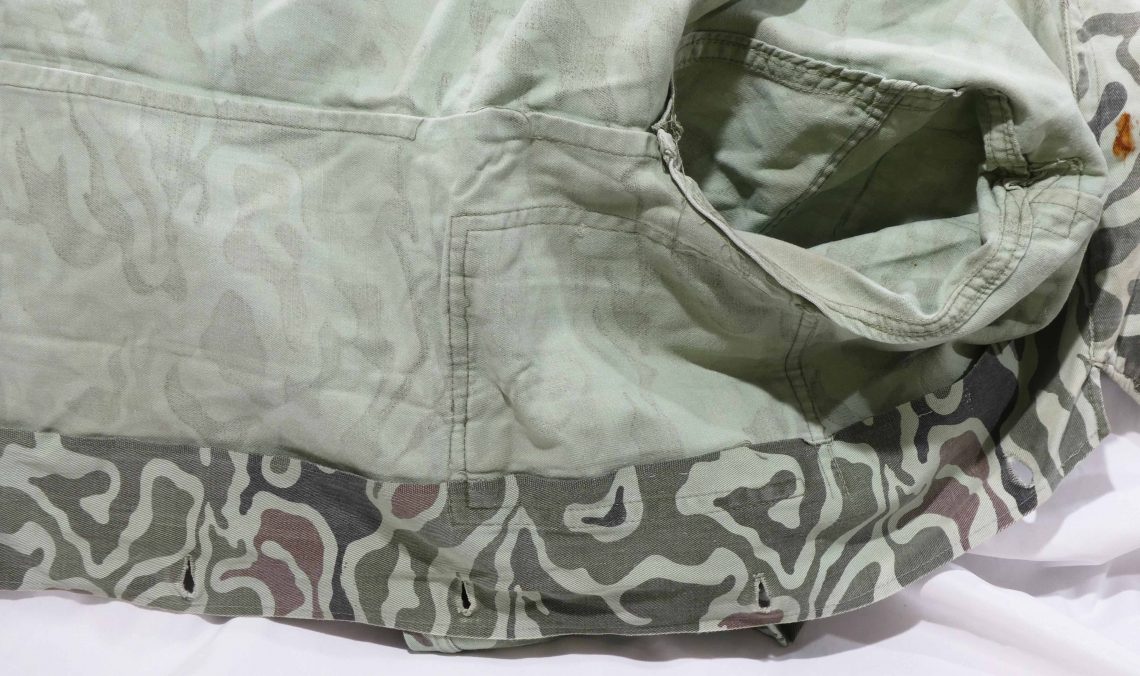
Jacket 2:
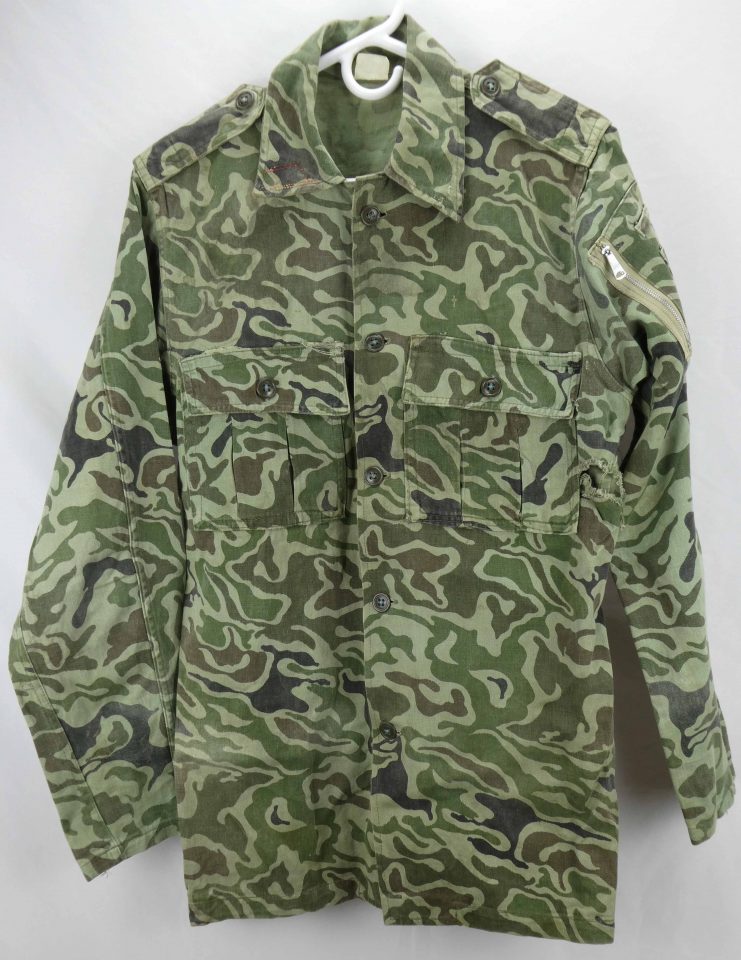
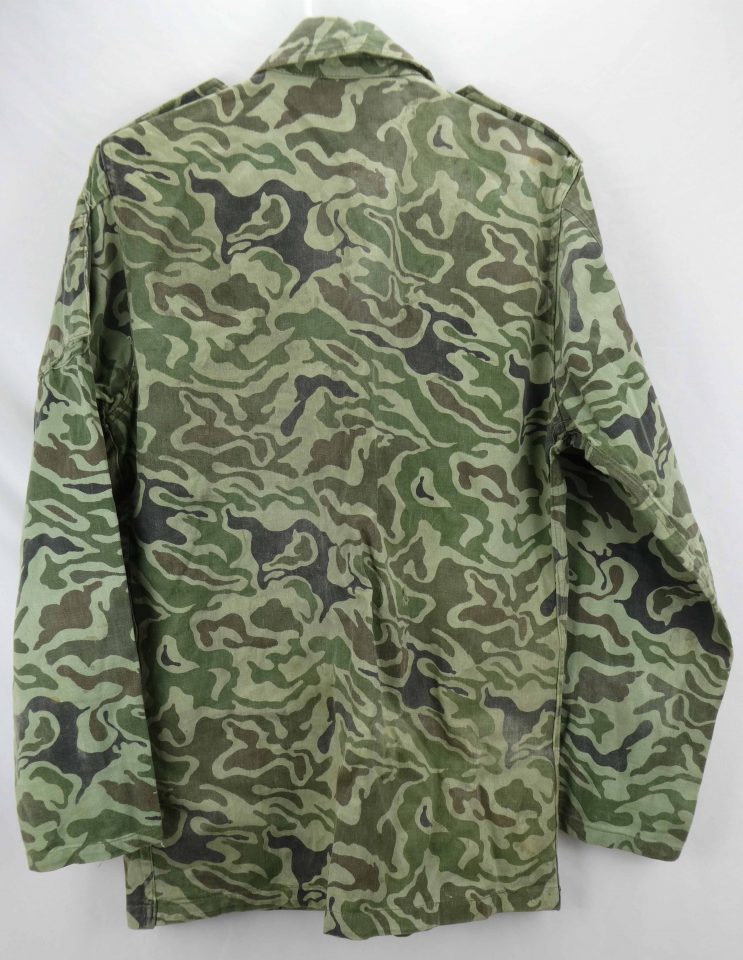
This one is less faded, has an intact tag, and a functioning arm pocket zipper.
Tag:
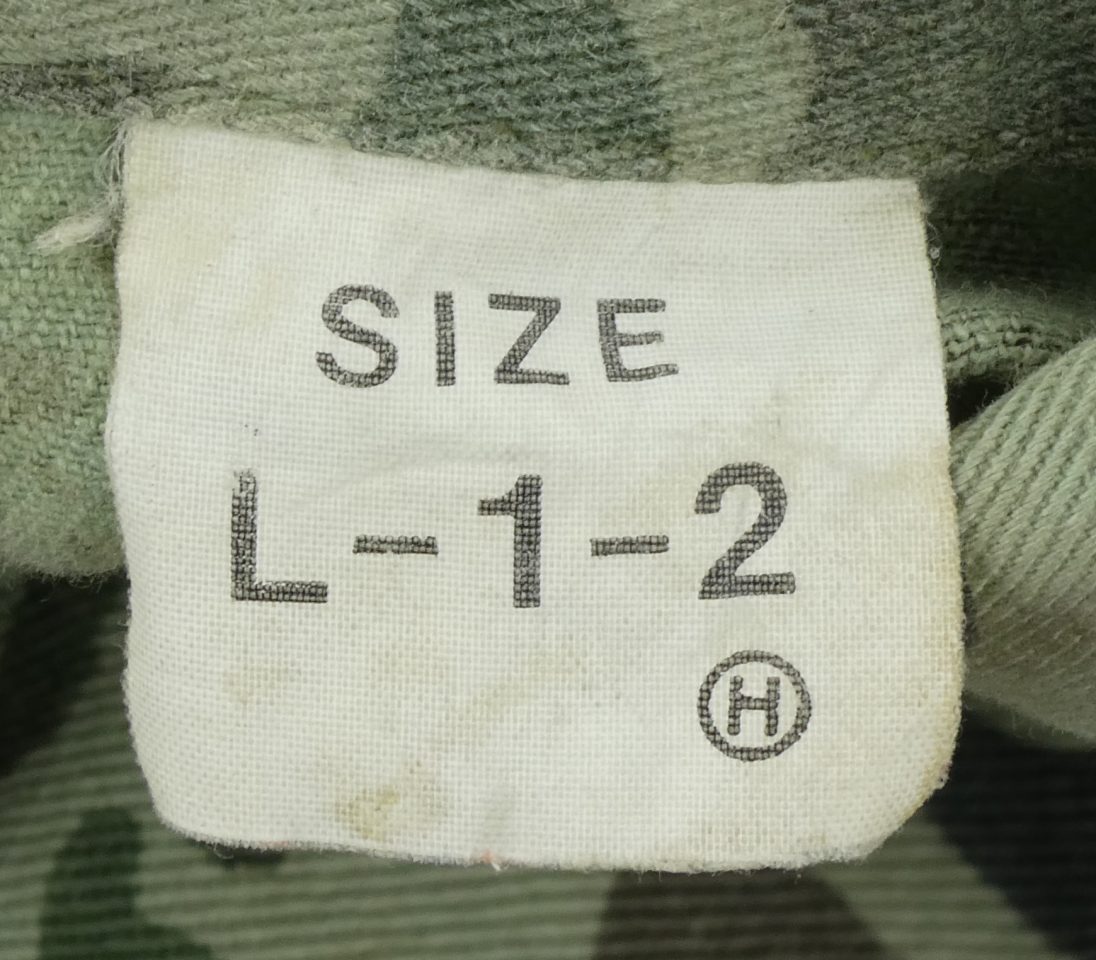
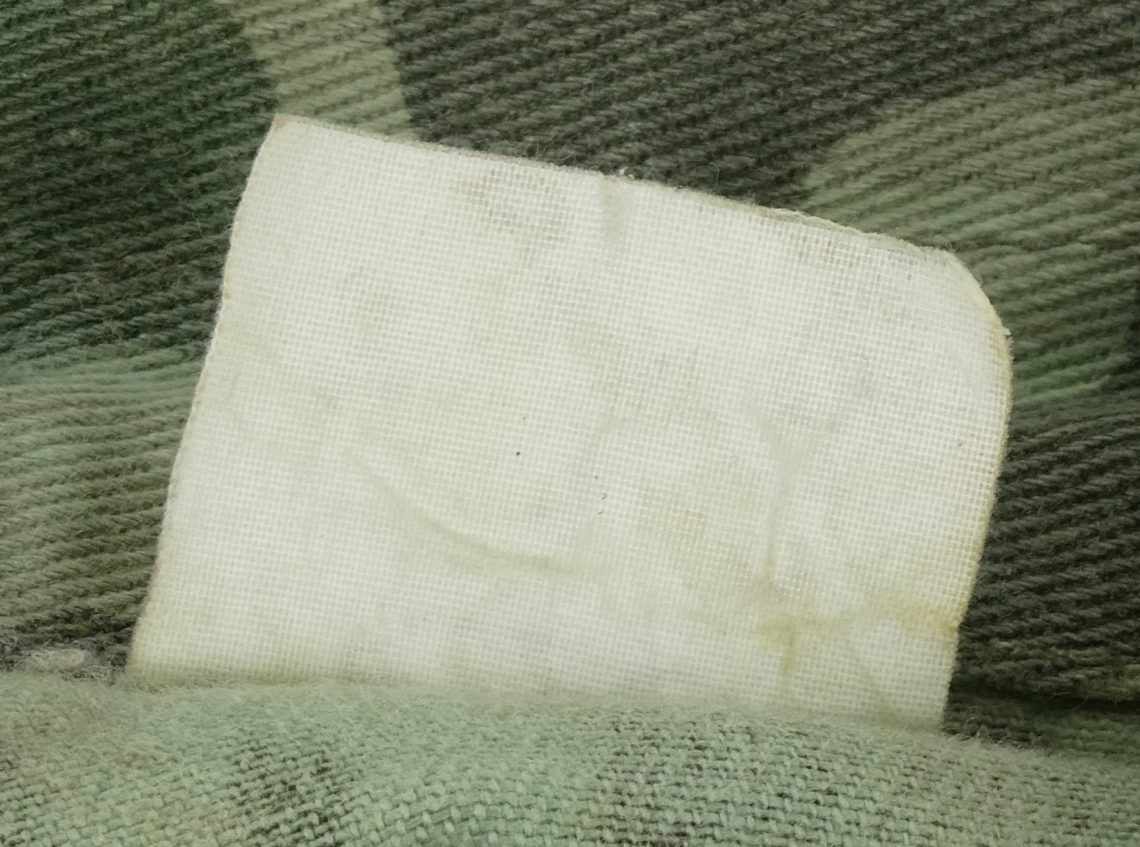
Collar:

Red thread for collar tab.
Hat:
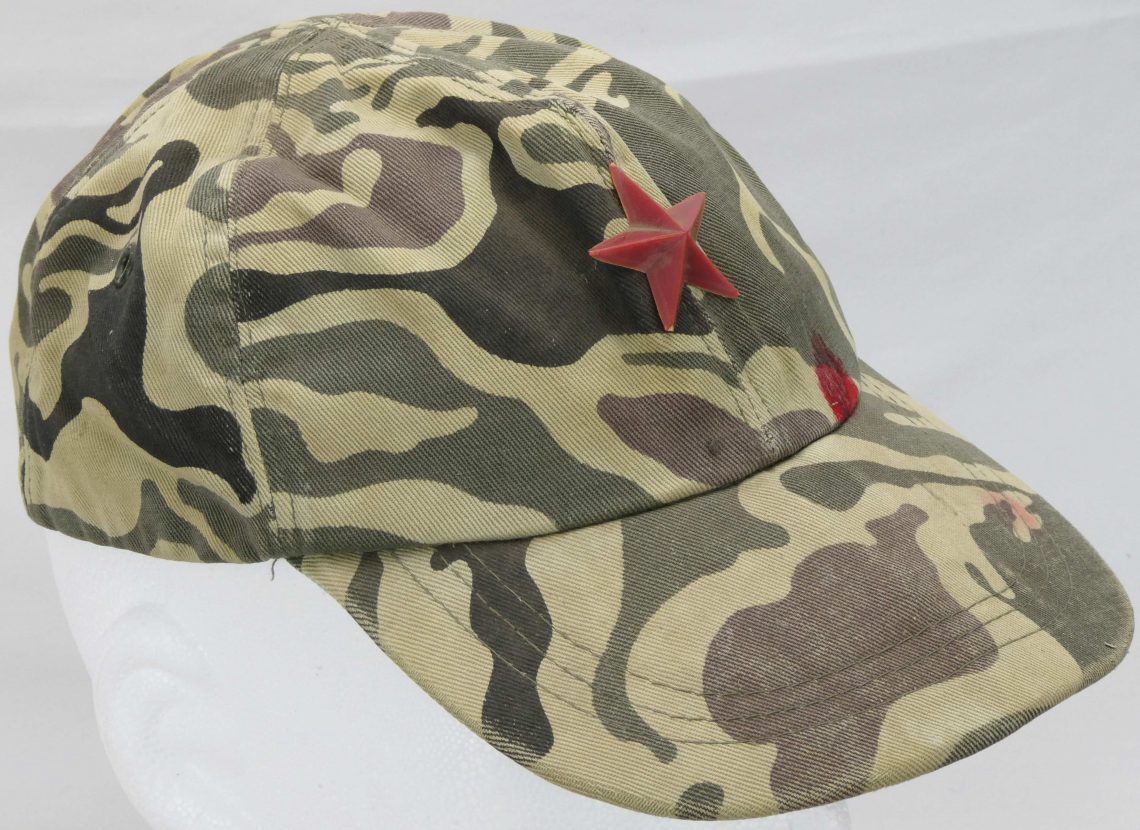
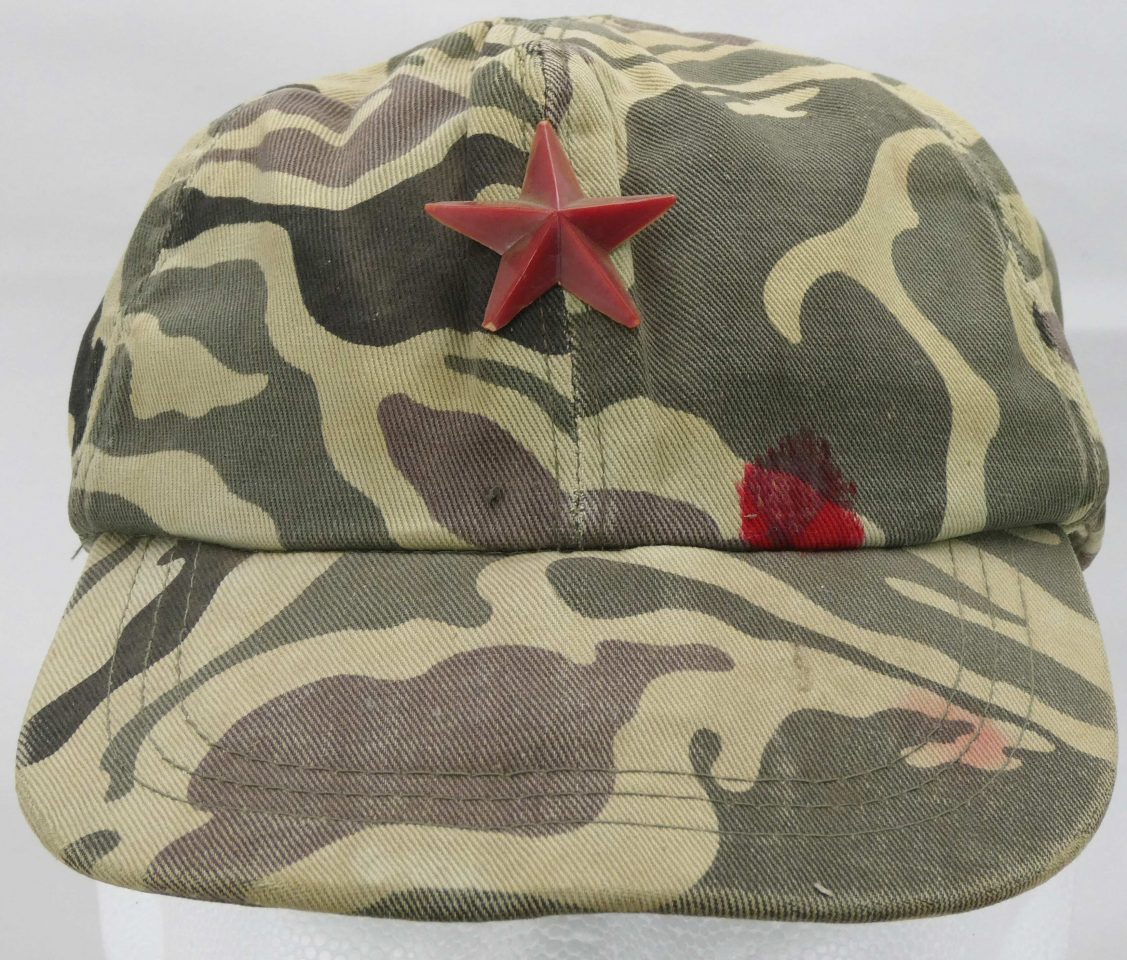
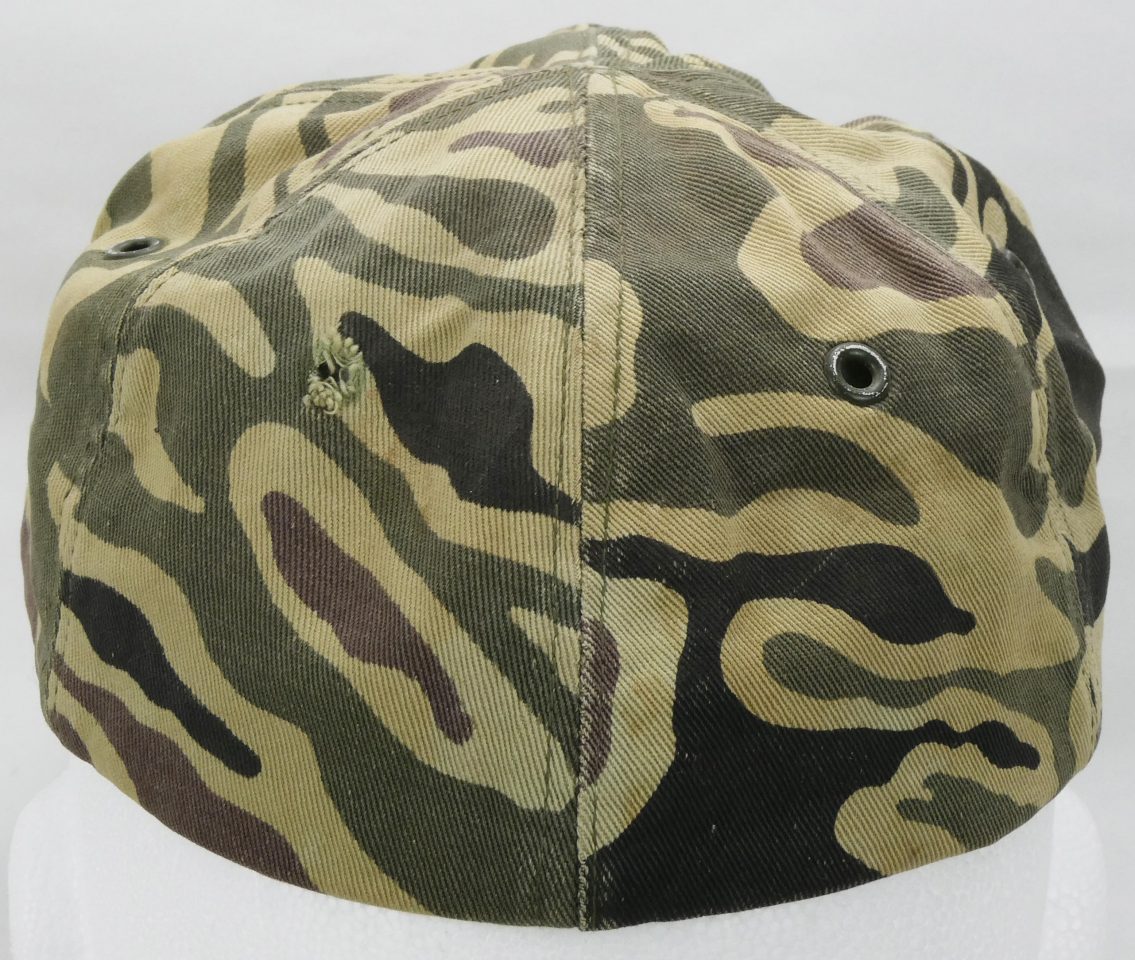
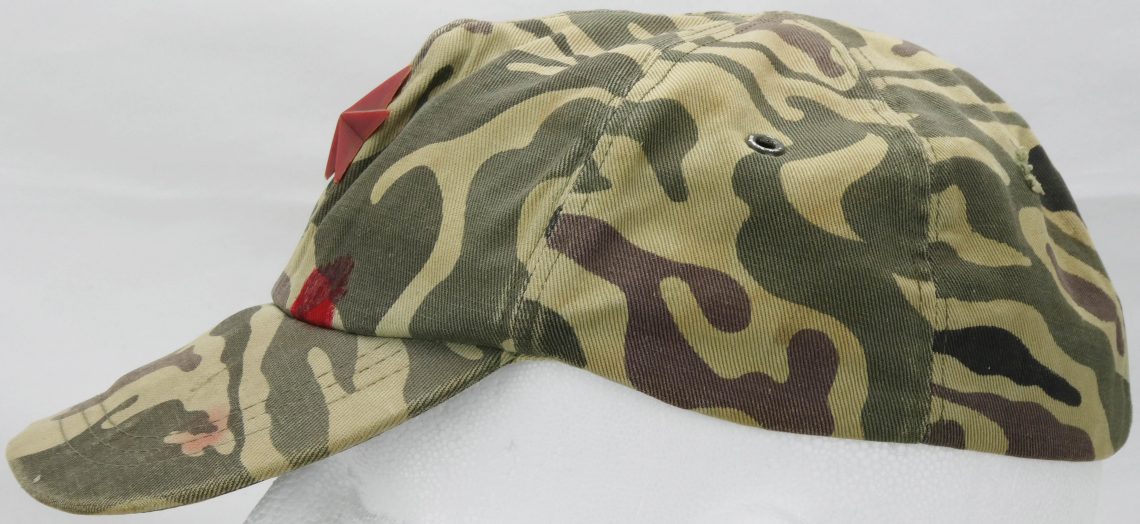
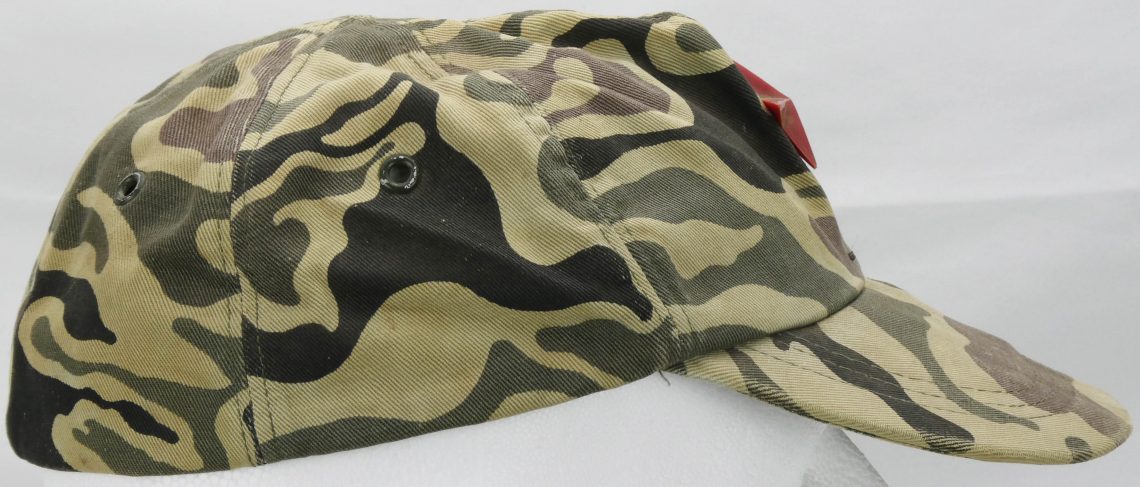
Heavily worn and used. Red star badge is plastic and is attached to hat with a metal screw.
Top:

Inside:
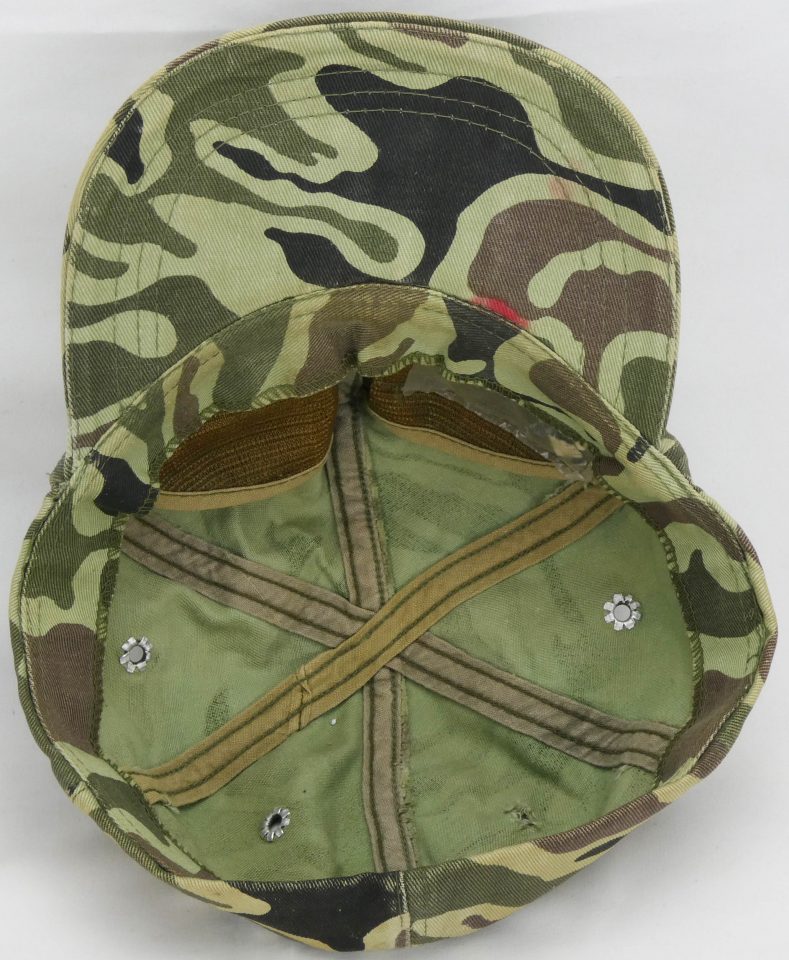
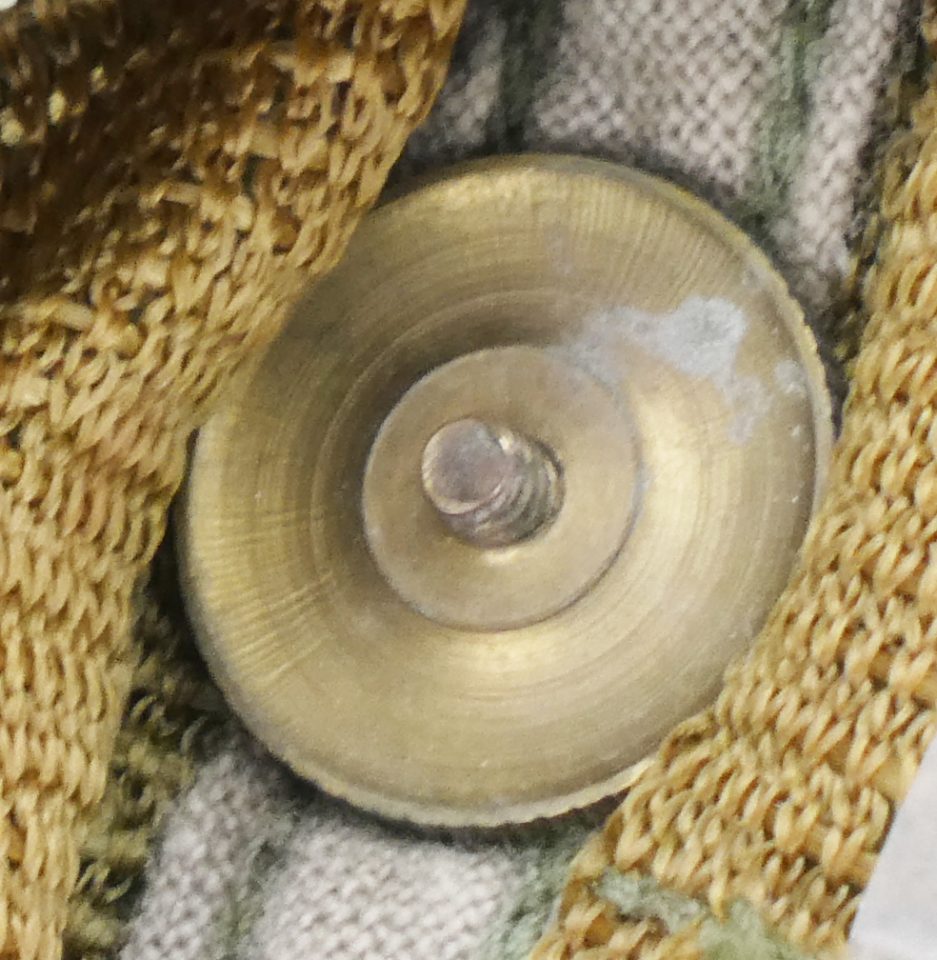
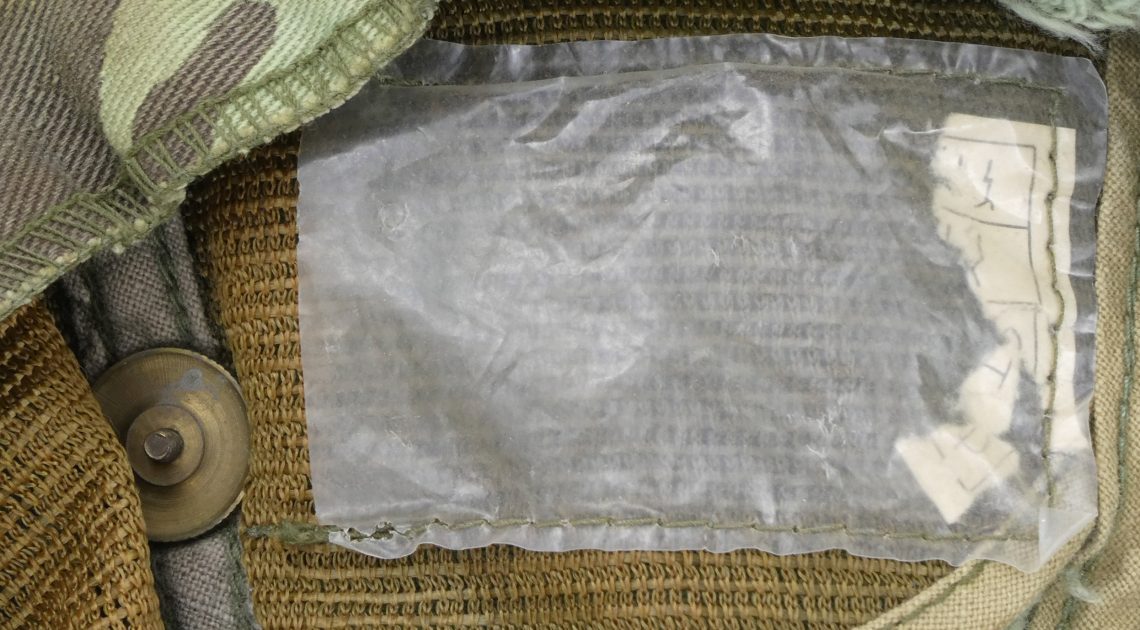
Usage Photos:
ZIPRA:
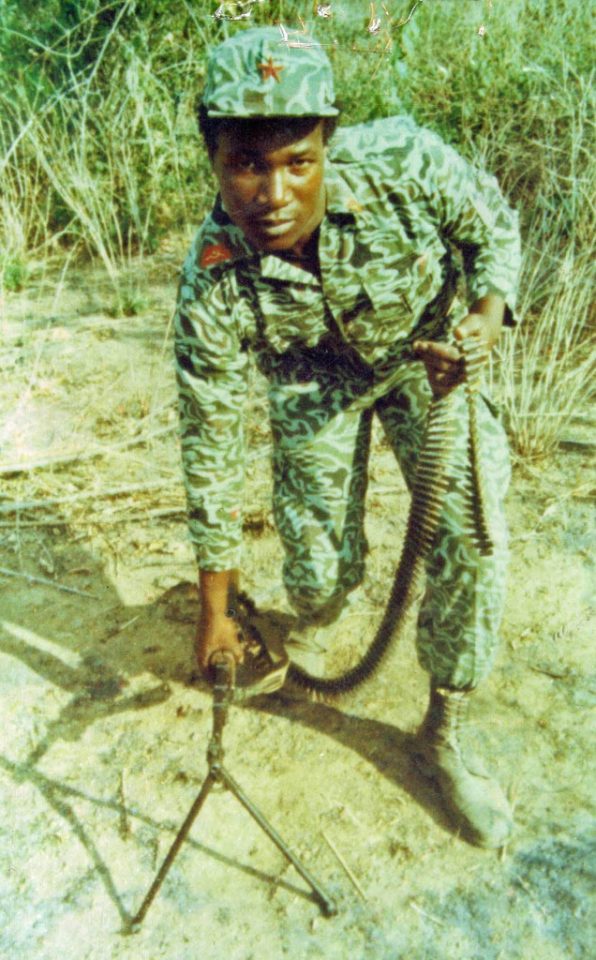
Guatemala:
